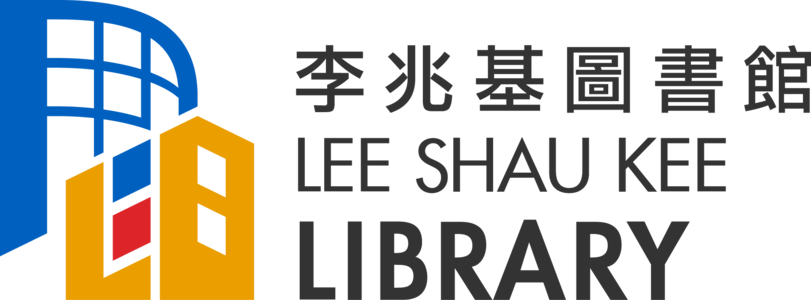Introduction
This exhibition features five representative Hong Kong artists: Hau Kwei Wong, Raymond Fung Wing-kee, Wai Bong Koon, Joey Leung Ka-yin, and Barbara Choi Tak-yee, bringing together their ink paintings of Hong Kong scenery.
While landscape painting based on actual observed scenery has long been an important genre in the tradition of Chinese landscape painting, Hong Kong landscape emerged as a significant subject only in the 1950s and 60s, when traditional ink painters relocating from Mainland China such as Wang Bo-yeh and Lui Shou Kwan started to seek out local scenery and sketch from life. Attempting to achieve breakthroughs and establish individual styles through direct observation of nature, their endeavors laid milestones on the path to developing a local flavor of traditional ink painting in Hong Kong.
After the 1960s, the surge of the New Ink Painting and the Modern Ink Painting movements gave rise to experimental ink painting, which sought to integrate Chinese and western artistic concepts and techniques. This expanded the vocabulary, materials and presentation of ink painting, and abstract landscape became a dominant expression of the era.
Entering the 21st century, we see in Hong Kong ink painting a freer and more open dialogue between tradition and modernity, and a greater a diversity of styles. Less driven by the earlier search for artistic transformation, representation of the Hong Kong landscape is now more motivated by the artists’ emotional identification with the city and intimate reflections on her cultural and political issues. The five participating artists, with different backgrounds and ages, command distinct artistic styles that reflect the multiple facets of contemporary ink painting in Hong Kong and diverse approaches to depicting her scenery.
Born after the Second World War and trained outside painting academies, Hau Kwei Wong and Raymond Fung Wing-kee both show influences of the Modern Ink Painting Movement and tend to use experimental rather than traditional ink techniques.
In his “Clear Water Bay Series”, Wong accumulates short strokes and dots to form lines and weave compositions, capturing the poetic moments of shimmering morning sun, as well as obliterating rainstorms through light and shadow, ink and space. Whereas, in his “Cityscape”, iconic architectures of Hong Kong Island are refracted and dissected by panels of glass curtain walls, and the concrete jungle of high-rise buildings abstracted into patterns of black and white checkers.
Fung’s represented world oscillates between real places, and “borrowed” or “created scenery” distilled from nature. Thus, simple semi-circles of graded ink washes overlap and recede in a cascading rhythm against an empty background depicting the tranquil view of Tolo Harbor. Silhouettes of mountain peaks, textured by paper folds, drift in and out through mist and haze, evoking transcendental visions of realms beyond, across sets of screens, or within compressed narrow frames.
The three younger artists, all graduates of local art academies, are more inclined to reference traditions of classical Chinese painting. Wai Bong Koon reinterprets the style of literati ink painting; while Joey Leung Ka-yin practices the fine-line manner, using bright colors; and Barbara Choi Tak-yee adopts the elegant palette of blue-and-green landscape.
With brushwork modeled on the ancient master Dong Yuan, Koon conjures up the undulating hills of Pat Sin Leng seen at a distance, or a close-up view of the precipitous Lion Rock. Each is headed by a long preface in classical Chinese, transcribing records from local gazetteers and reflecting on current affairs. By cutting up the handscroll format into displaced square panels, however, the works create a modern visual effect, while prompting viewers to re-connect the broken horizon or mountain ridges through spatial and temporal gaps.
The Lion Rock appears as a surreal dreamland in Leung’s horizontal frames. Maidens’ bending limbs form mountain ranges adorned with exotic plants of variegated colors, and encircled by gentle waves of their voluminous black hair. The rocky top metamorphoses into a lethargic lion, whose demoralized condition is diagnosed and commented on by doggerel inscribed on the left panel.
In Choi’s blue and green landscape with auspicious connotations, Hong Kong and Lantau Islands are portrayed as immortal’s islets. Likewise, the Canal Road Flyover in Causeway Bay, famous for the folk practice of demon exorcising, and old storied houses under Mount Parker, have been transformed into Taoist sacred sites of stalactite caves and grotto heavens. The landmarks, buildings, and figures drawn in fine line and color not only serve as a link to reality, but also embody the artist’s nostalgic interpretation of Hong Kong history.
Although all five artists picture Hong Kong differently, they cohere in having chosen to paint familiar scenery in ways that go beyond mere faithful depiction. Through unique and innovative presentation, their work conveys acute observation, intimate feelings, and capricious imagination, inspired by the artists’ daily life. Their paintings invite the audience to examine, reflect, and contemplate the distinctive landscape of Hong Kong from new perspectives.
Li-tsui Flora Fu, Associate Professor, Division of Humanities
The Hong Kong University of Science and Technology

